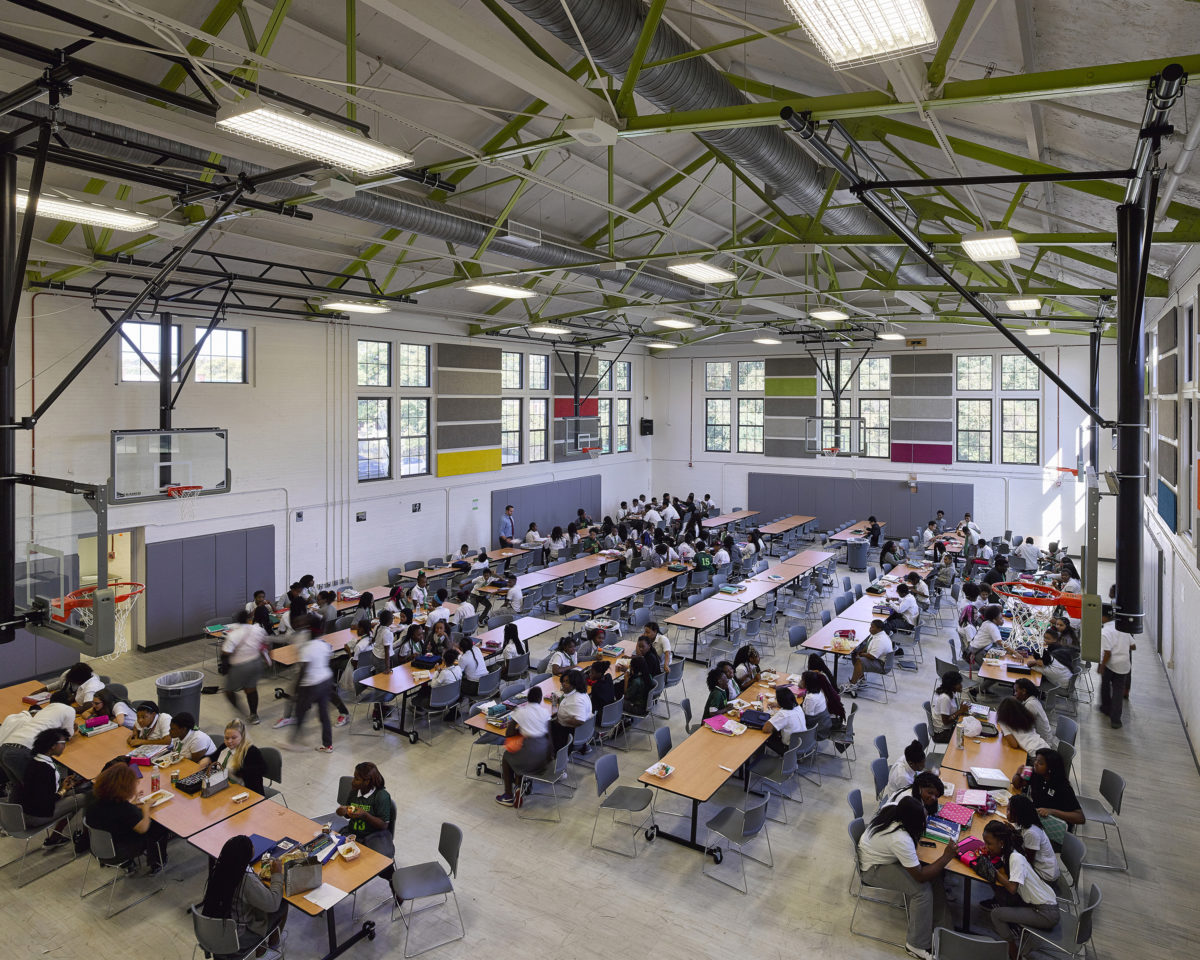Green Street Academy, which overhauled a 91-year-old 111,000-square-foot building that once housed Gwynns Falls High School last year, has received the highest LEED designation possible.
It’s the second largest LEED Platinum project in the world, and the only project in Maryland and Baltimore under the LEED v3 rating system, according to the U.S. Green Building Council.
During a tour this week, Executive Director Dan Schochor said the designation fits with the school’s intention to teach students about sustainability, as well as have a building that prepares them for the future. The grades 6-12 school, which was cofounded by Camden Partners founder David Warnock and Lawrence Rivitz, allows students to pick career tracks to explore and incorporates other strategies specifically catered to getting prepared for a 21st-century economy.
“This displays to the community and students the seriousness with which we take our vision,” Schochor said.
During a tour, he said the building was already a “concrete fortress,” with the redevelopment project headed up by Seawall Development and Southway Builders offering a chance to make key modern upgrades.

The gym and cafeteria are in the same space. (Photo courtesy of Hord Coplan Macht)
A long checklist goes into the LEED designation, but here’s a sampling.
Working with architectural firm Hord Coplan Macht, the redevelopment project involved reusing walls, floors and roofs, as well as recycled materials.
The new elements that went into the building include a number of energy-saving elements. Schochor said the school’s central A/C system circulates outside air. In classrooms, LED lights have sensors that can sense sunlight and automatically dim. Hallway lights are on timers that switch off at night and become motion-activated, and one of five water bottle fill stations tallied about 20,000 bottles saved in the last year.
In the parking lot, many cars are parked under canopies outfitted with solar panels that are modeled to generate about 7.5 percent of the school’s energy.

Solar-paneled parking canopies. (Photo courtesy of Hord Coplan Macht)
It’s not only physical elements, however. What happens in the building is also a consideration for the designation. For one, the school got marks for serving as a community center and sharing the facility with Kingdom of Life Church.
The curriculum itself is also sustainable. One of the curriculum tracks incorporates urban agriculture. Students were learning about biotech in the classroom. Outside, a courtyard garden offers students a chance to dig in, and tires dumped on the property became planters. A fish farm is almost set to come online in the basement of the school.
“The building itself is an incredible teaching tool,” said Sabrina Bachman, the U.S. Green Building Council’s Maryland director. She presented the school with the official plaque on Wednesday.
Before you go...
Please consider supporting Technical.ly to keep our independent journalism strong. Unlike most business-focused media outlets, we don’t have a paywall. Instead, we count on your personal and organizational support.
Join our growing Slack community
Join 5,000 tech professionals and entrepreneurs in our community Slack today!

The person charged in the UnitedHealthcare CEO shooting had a ton of tech connections

From rejection to innovation: How I built a tool to beat AI hiring algorithms at their own game

Where are the country’s most vibrant tech and startup communities?


